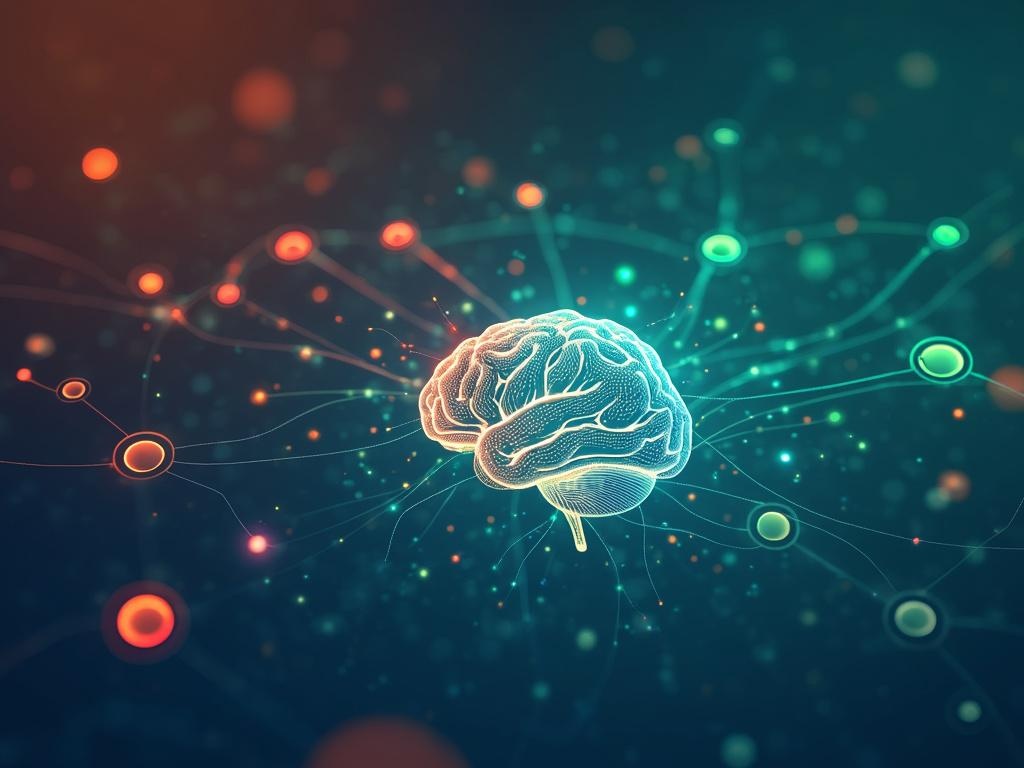AI-Powered Personalization in 2025: Hyper-Targeted Content

AI-Powered Personalization in 2025: Hyper-Targeted Content
The digital landscape is evolving at an unprecedented pace. In 2025, generic content will no longer cut it. Users expect, and even demand, experiences tailored specifically to their needs and interests. Enter AI-powered personalization: the key to unlocking unprecedented levels of engagement and conversions. This article delves into the transformative power of artificial intelligence in creating hyper-targeted content, exploring the tools and techniques that will define the future of personalized user experiences, especially within platforms like Webflow.
The Rise of Hyper-Personalization
Personalization isn't a new concept. For years, marketers have used basic demographic data and segmentation to deliver somewhat relevant content. However, true hyper-personalization goes far beyond these rudimentary tactics. It leverages the power of artificial intelligence to understand individual user behavior, preferences, and intent in real-time, dynamically adjusting content to resonate with each unique visitor. This shift moves us from a broad-strokes approach to a granular, one-to-one marketing strategy.
Imagine a scenario: A potential customer visits your website, initially browsing articles about sustainable living. AI algorithms track this behavior and, on subsequent visits, prioritize content related to eco-friendly products, highlight testimonials from environmentally conscious consumers, and even adjust the website's color scheme to evoke themes of nature and sustainability. That's the power of hyper-personalization.
Why Hyper-Targeted Content Matters
The benefits of AI-powered personalization are numerous and far-reaching:
- Increased Engagement: Relevant content captures attention and holds it longer. Users are more likely to interact with information that directly addresses their needs and interests, leading to increased time on site, lower bounce rates, and higher click-through rates.
- Improved Conversion Rates: By presenting the right offer, at the right time, to the right person, hyper-personalization significantly increases the likelihood of conversion. Whether it's a purchase, a sign-up, or a download, tailored content can nudge users towards desired actions.
- Enhanced Customer Loyalty: When users feel understood and valued, they are more likely to develop a strong connection with your brand. Personalization fosters a sense of individual attention, building trust and fostering long-term loyalty.
- Better ROI on Marketing Spend: By focusing your efforts on delivering targeted content to receptive audiences, you can maximize the impact of your marketing investments and reduce wasted spend on irrelevant or ineffective campaigns.
- Data-Driven Insights: AI-powered personalization tools provide valuable data on user behavior, preferences, and pain points. These insights can be used to refine your content strategy, improve your product offerings, and optimize the overall customer experience.
AI Tools for Hyper-Personalization: A 2025 Perspective
The AI landscape is constantly evolving, and the tools available for hyper-personalization are becoming increasingly sophisticated. Here are some key categories and examples of technologies expected to dominate the market in 2025:
- Personalized Recommendation Engines: These engines analyze user behavior and predict what content, products, or services they might be interested in. Advanced algorithms consider factors such as browsing history, purchase history, demographics, and contextual data to deliver highly relevant recommendations. Example: Dynamic product recommendations on an e-commerce site based on a user's past purchases and browsing activity, combined with real-time trending data.
- Dynamic Content Optimization (DCO) Platforms: DCO platforms automatically adjust website content, including headlines, images, and calls to action, based on individual user characteristics. These platforms often use machine learning to continuously test and optimize different content variations, ensuring that each visitor sees the most effective version. Example: A DCO platform automatically changes the hero image on a landing page based on the user's geographic location, showcasing products that are popular in their region.
- AI-Powered Chatbots: Chatbots are becoming increasingly sophisticated, capable of engaging in natural language conversations and providing personalized support and recommendations. In 2025, we can expect chatbots to play an even more prominent role in delivering personalized experiences, offering tailored advice, answering questions, and guiding users through the sales funnel. Example: A chatbot understands a customer's query about finding a specific type of running shoe and provides personalized recommendations based on their foot type, running style, and preferred terrain.
- Predictive Analytics Platforms: These platforms use machine learning to forecast future user behavior, allowing marketers to proactively personalize the customer experience. By identifying users who are likely to churn, make a purchase, or engage with specific content, businesses can tailor their messaging and offers to maximize impact. Example: A predictive analytics platform identifies users who are at risk of churning from a subscription service and automatically sends them a personalized email with a special offer to encourage them to stay.
- Natural Language Generation (NLG) Tools: NLG tools can automatically generate personalized content, such as product descriptions, email subject lines, and even entire blog posts, based on individual user preferences and data. This technology enables businesses to create vast amounts of personalized content at scale, without requiring significant manual effort. Example: An NLG tool automatically generates personalized product descriptions for an e-commerce site, highlighting the features that are most relevant to each individual user based on their past browsing and purchase history.
Webflow and the Future of Personalized Content
Webflow, with its focus on design flexibility and no-code development, provides a powerful platform for implementing AI-powered personalization. While Webflow doesn't natively offer advanced AI capabilities, it readily integrates with third-party tools and APIs, allowing you to build highly personalized experiences.
Here are some ways you can leverage Webflow for hyper-targeted content:
- Integrating with DCO Platforms: Connect your Webflow site to a DCO platform to dynamically adjust content based on user behavior and data. Webflow's flexibility allows you to easily implement the platform's code snippets and track the performance of different content variations.
- Using APIs for Personalized Recommendations: Utilize APIs from recommendation engines to display personalized product or content recommendations on your Webflow site. Webflow's custom code capabilities enable you to fetch and display recommendations in a visually appealing and user-friendly manner.
- Embedding AI-Powered Chatbots: Integrate an AI-powered chatbot into your Webflow site to provide personalized support and guidance to visitors. Webflow's embed functionality makes it easy to add a chatbot to any page.
- Leveraging Webflow's CMS for Dynamic Content: While not AI-powered directly, Webflow's CMS enables you to create dynamic content that can be personalized based on user segments. For example, you can create different versions of a page for users in different geographic locations or with different interests.
Techniques for Creating Hyper-Targeted Content
Beyond the tools, successful AI-powered personalization requires a strategic approach to content creation. Here are some key techniques to consider:
- Data Collection and Analysis: The foundation of hyper-personalization is data. Collect as much relevant data as possible about your users, including their demographics, browsing history, purchase history, and social media activity. Use data analytics tools to identify patterns and insights that can inform your personalization strategy.
- Segmentation and Persona Development: Group your users into meaningful segments based on their characteristics and behaviors. Create detailed personas for each segment to help you understand their needs, motivations, and pain points.
- Personalized Content Mapping: Map your content to different user segments and personas. Identify the types of content that are most likely to resonate with each group and develop a content strategy that caters to their specific needs.
- A/B Testing and Optimization: Continuously test different content variations to see what works best for each user segment. Use A/B testing tools to compare the performance of different headlines, images, and calls to action, and optimize your content based on the results.
- Privacy and Transparency: Be transparent with your users about how you are collecting and using their data. Give them control over their data and allow them to opt out of personalization if they choose. Adherence to privacy regulations like GDPR and CCPA are paramount.
The Future of AI and Personalization
In 2025, AI-powered personalization will be the norm, not the exception. Businesses that fail to embrace this trend will be left behind. As AI technology continues to evolve, we can expect to see even more sophisticated and effective personalization techniques emerge. The key to success will be to stay ahead of the curve, continuously experiment with new technologies, and prioritize the needs and preferences of your users. The convergence of AI, machine learning, and platforms like Webflow will empower businesses to create truly unique and engaging customer experiences.
Conclusion: Embrace the Power of Hyper-Targeted Content
AI-powered personalization is no longer a futuristic concept; it's a present-day reality that is transforming the way businesses interact with their customers. By leveraging AI tools and techniques to create hyper-targeted content, you can unlock unprecedented levels of engagement, conversion, and customer loyalty. As we move closer to 2025, embracing the power of AI in personalization will be crucial for any business looking to thrive in the increasingly competitive digital landscape. Start exploring the possibilities today and prepare to redefine the future of customer experience.








